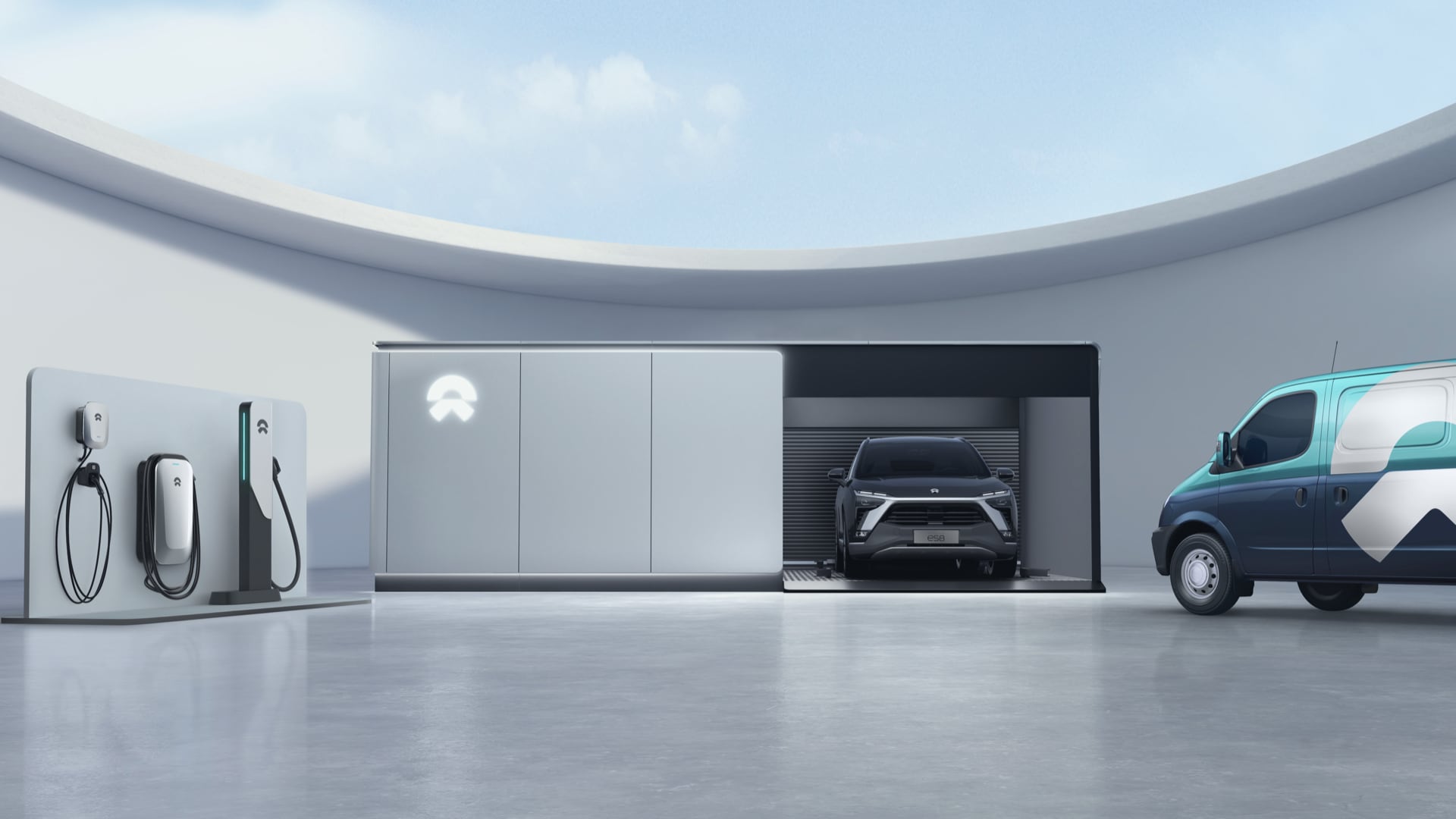
NIO will soon be putting into operation the first integrated station for charging and exchanging batteries in Norway. This was announced earlier this autumn by this Chinese manufacturer of electric cars (EVs). In fourteen months time, twenty such stations should be operating in Norway. The plan is for NIO to enter the German market after that.
In China, NIO is already working in earnest on battery exchange stations. To date, NIO claims to have built 301 so-called NIO Power Swap Stations in China and has exchanged more than 2.9 million batteries.
Battery swap stations
Battery swap stations seem to be the future in China. “Although only 763 stations are currently operational, Aulton has announced it will install 10,000 by the end of 2025,” says Kevin Mak, Principal Analyst automotive electronics at Strategy Analytics, an international technology consulting firm. Aulton is the leading provider of battery exchange infrastructure in China.
‘Battery swap’ refers to the method by which a driver of an EV has her or his (almost) flat battery exchanged for a charged battery at a charging station. This can be an effective method for resolving the autonomy problem.
800 Volt battery system
Battery swapping (instead of charging) is not a new idea. As early as 2007, the Israeli company Better Place introduced exchangeable batteries to the market. However, the idea did not catch on and the company went under six years later. According to Mak, one of the reasons for this had to do with the market. “In Israel, distances are not big,” he says. That argument would also hold true especially for ‘small’ European countries, such as the Netherlands, where the charging infrastructure is already excellent at any rate
Other arguments can be made as to why the future of battery swapping is uncertain. “If the technology of the 800 Volt or 900 Volt battery system continues to develop and fast charging becomes a matter of a coffee break, then that poses a real threat to battery swapping,” says the 48-year-old Mak. “But then that kind of fast-charging technology must not come at the expense of battery life.”
Dynamic wireless charging
Another potential threat to battery swapping is dynamic wireless charging, whereby an EV is recharged while driving. “But the concept has not yet matured, and the cost of building a dynamic charging infrastructure mounts up,” the UK analyst explains.
All things considered, this kind of exchange station infrastructure, which is also costly, does not seem to be a very obvious option in Europe. Nevertheless, Mak believes that ‘swapping’ definitely stands some chance. It is simply an additional option for the user. Because the batteries are being offered as an extra service, dubbed Battery-as-a-Service (Baas), the bar for buying an EV is lowered. NIO, for example, offers its ES8 model without a battery. This makes the purchase price a lot lower. The user does then need to buy a subscription for the use of the batteries (including swapping).
Swapping can also be a solution to public charging infrastructure problems, such as vandalism and poor maintenance of charging stations and drivers hogging the charging poles.
Standardization of battery sets
Mak nevertheless sees a third threat to ‘swapping’. Each manufacturer has its own battery set, and these are not interchangeable. Only NIOs can be handled at a NIO swap station. The Chinese authorities, who like to control the free reign of their economy, have not (yet) issued any indications that would point to standardization of battery sets. “Last Monday, new government regulations on battery swapping came into effect,” says Mak, who has a sound knowledge of the Chinese EV market. “But this only concerned safety regulations.”
In the world of two (and three) wheels, on the other hand, things are heading towards the standardization of batteries. It is not for nothing that four major motorcycle manufacturers have joined forces. Following the signing of the declaration of intent last March, the Italian Piaggio, KTM from Austria and the Japanese Honda and Yamaha officially signed the agreement two months ago to set up a consortium for swappable batteries for motorcycles.

The consortium will be working on standardizing swappable batteries, their charging systems and the surrounding infrastructure. Piaggio is already far advanced in the field of interchangeable batteries. Since 2019, the Italian manufacturer has been selling in India the electric Piaggio Ape, a three-wheeler with swappable batteries, also known as a ‘tuk tuk.’ The market is ripe for interchangeable batteries, as charging infrastructure is virtually non-existent in India. Last week, Piaggio announced a partnership with BP in the provision of charging and battery swap stations in India and also in Europe.
Two- and three-wheelers
Mak feels that swapping in the case of two- or three-wheelers is an idea that will catch on. “The battery of a motorcycle or scooter is lighter in weight and portable. It’s easy to swap them. In principle, the driver can also do it themselves. The disadvantage of batteries in EVs is that they are large and that taking out and replacing these batteries is not a simple procedure. You need special personnel for that, among other things, to prevent any damage.”
Read how smart charging is the solution to energy shortages

